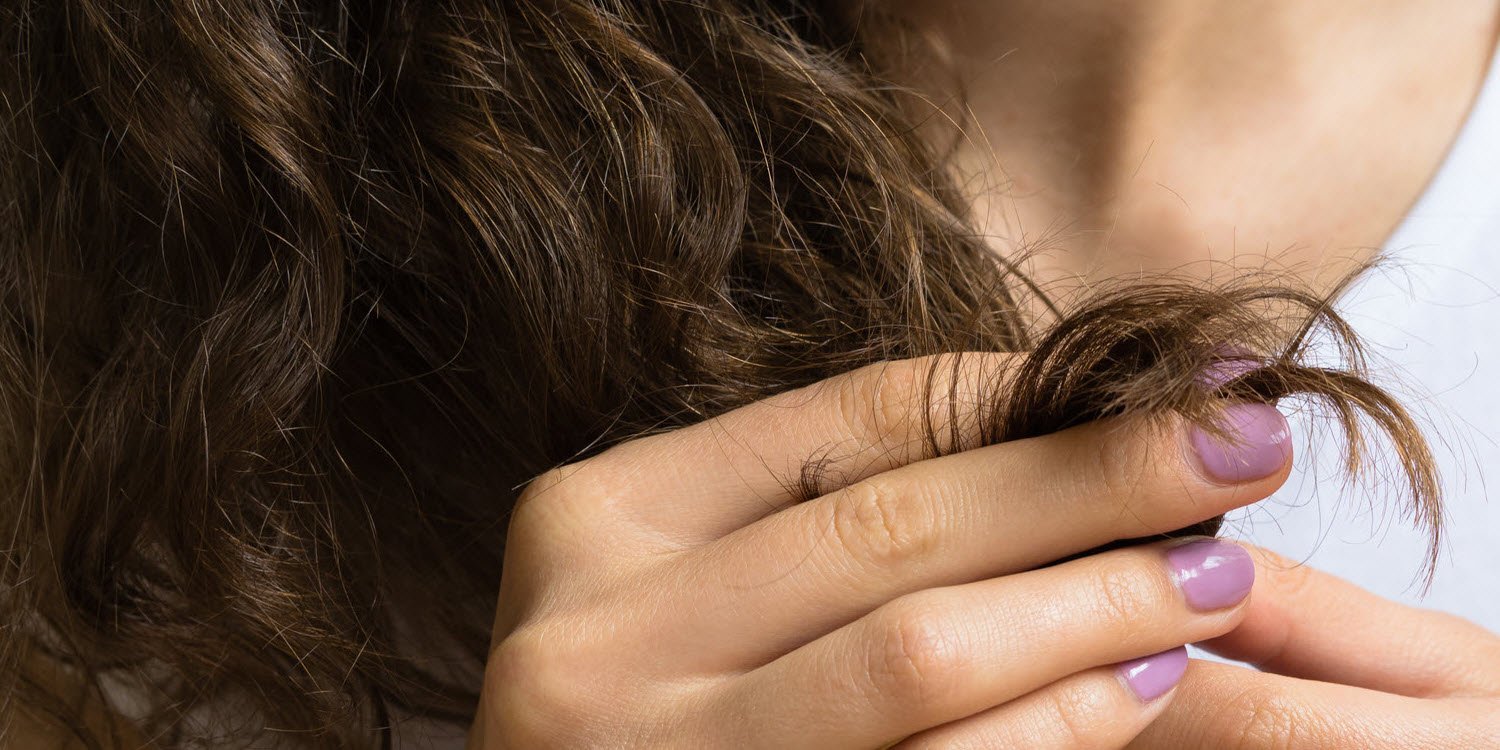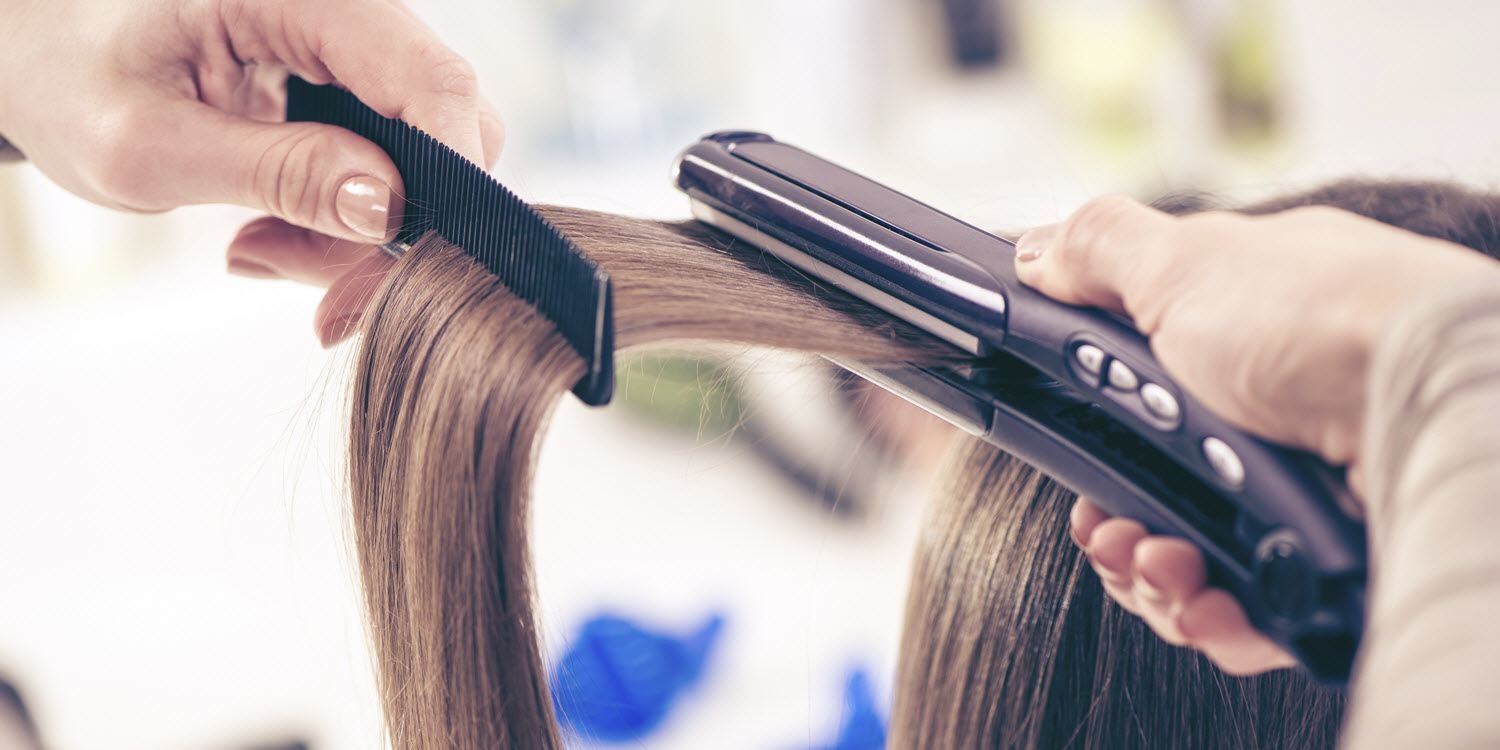8 Ways You Could Be Damaging Your Hair — And How to Stop

Is your hair looking a little rough around the edges? Do you feel like you need to put your hair on a damage-control regimen? Not-so-healthy hair can take a toll on our self-image. Thankfully, most causes of breakage and frizz are preventable by changing some of our bad hair behaviors.
1. Damage From Being Too Rough On Wet Hair
What Happened?
When your hair is wet, two of the three types of internal bonds are temporarily broken, allowing the hair to stretch up to an extra 1/3 of its length while wet.
Rough combing or brushing, or securing tightly in a ponytail or towel while the hair is still wet can cause damage. As your hair dries, it shrinks to its original length. The hair strand can snap at weakened areas, creating frizz and breakage lines.
-
1. Detangle gently:
-
1. Eat your colors:
-
1. Check in on your diet:
-
1. Massage your scalp:
-
1. Keep yourself hydrated:
-
1. Use oil products to restore luster
-
1. Plan Ahead:
-
1. Low and Slow:
-
1. Hair Treatments:
-
1. Wait it out:
-
1. Choose wisely:
-
1. Drop it low:
-
1. Detangle with a light touch.
-
1. Add a day between washes:
-
1. Condition and cleanse in one step:
-
1. Turn it down:
-
1. Heat style less often:
-
1. Ditch damaged tools:
-
1. Cover up:
-
1. Repel damage:
-
1. Wider hair elastics:
-
1. Softer headbands:
-
1. Move your hair pieces:
Preventative Measures:
For hair that tangles often, detangle in the shower with a wide tooth comb while conditioning. Work from the bottom and detangle a few inches at a time. Use more care with detangling towel-dried hair to prevent stretching your strands.
1. Change up your towel:
Use a microfiber hair towel to dry hair. The weight of a full-sized body towel can create breakage around the hairline. Try drying with a t-shirt on curly or delicate hair.
1. Have patience:
Wait until your hair is dry to tie it back. If you pull it into a tight ponytail when it’s still wet, it shrinks back to its original length and tension on the strand creates breakage. The breakage halo isn’t a great look on anyone. Using clips to secure down frizz and short pieces can just make things worse.
How to Fix Wet Hair Breakage Damage – Care and Repair
1. Detangle hair with a light oil mist.
· Strengthen hair with keratin or reparative products.
· Blow dry or air dry hair completely before securing with clips and bands.
· Avoid using brushes to detangle hair. Opt for a wide-tooth comb.

2. Damage From Under-Nourished Hair
What Happened?
Healthy hair starts with a healthy body. Hair requires a balance of vitamins, minerals, and nutrients to grow strong and supple.
Regular dehydration effects hair elasticity and shine. Water makes up 70-80% of hair and limiting its availability to your body results in dull, rough hair.
Poor scalp circulation restricts blood flow to the scalp, which causes tightness and can slow or stop hair follicles from producing new hair. Tension headaches and a tight scalp are an indicator of poor scalp circulation.
Preventative Measures:
Add vitamins and minerals vital to skin and hair health to your diet by eating fruits and vegetables in a wide range of colors. Aim for bright, colorful meals.
Track your nutrients to check in. If you’re not getting enough, supplement with omega-3 fatty acids, protein, biotin, vitamin b12, and iron.
Before washing and whenever you feel tension in your head, use your fingers or a brush with ball tips on your scalp to massage, prevent buildup, and keep blood flowing to your follicles.
Invest in a large insulated water bottle and bring it everywhere you go. You are more likely to drink water if it is cold, fresh, and readily available.
How to Fix Under-Nourished Hair Damage – Care and Repair
· Eat more mineral-filled vegetables and drink lots of water
· Use hair care for fragile and stressed hair. Biolage Advanced Full Density has been a lifesaver for scalp and breakage protection, giving the appearance of more strands of hair.
Now that you know what bad habits you’ve been committing, you can start on the path to healthier, shinier, and longer hair. Share this article with a friend who might need a little nudge in the right direction as well.
What changes are you going to make to improve your hair health? Comment below to let me know! And remember, whenever you go into the salon for hair coloring, highlights, or even just a cut, Bond Ultim8 can be used during your appointment to help nourish your hair, protect and preserve!
Megan LaCore is a beauty blogger and Artistic Educator from San Jose, CA that is guilty of all 8 types of damage at one point or another. She is currently on a mission to grow her hair long without ruining it and spends most of her free time wearing a hair mask.

Hair damage happens when hair bonds are broken due to stress on the hair. In this article, I’m going to give you the tools to keep your hair healthy and supple by reducing hair stress. I’ll explain how you can prevent damage, repair using treatments and conditioners, and protect with the right products.
With extra care and a little prevention, you can get your locks back on the path to strong and lush. Read on to learn what to do next.
3. Over-lightening and Frequent Hair Color Damage
What Happened?
In order to get permanent color molecules and lightener into the strand, the exterior layer of your hair, called the cuticle, must be slightly opened.
Peroxide and lighteners break down natural pigment, preparing the hair for artificial color. If you want vivid or pastel fantasy colors, your stylist needs to pre-lighten your hair first.
Lightening frequently or coloring too often can leave your hair vulnerable to chemical damage. More bonds break with each color service.
Preventative Measures:
Give your stylist a heads-up before a big color change. Planning your wedding? Talk to your stylist about your color goals before you plan your style for the big day.
If you want to go lighter, expect multiple phases of lightening before you reach your goal. Less damage over several sessions will get you results while maintaining healthier, shinier hair.
Ask your stylist to use a bond protector in your color. Bond Ultim8 can be used in your lightener and every step of your color service. Maintain with weekly treatment Bond Ultim8 3 and color care shampoo and conditioner.
· Choose between texture services and color changes:
Pick whether color or texture is more important to your hair goals. Lessen or eliminate the use of the other.
How to Fix Hair Color Damage – Care and Repair:
· Try a color technique that won’t show growth as soon, such as balayage highlights or a color melt into your natural tone. Maintenance will be easier on your hair AND your wallet.
· In-salon treatments are indispensable, but without follow-up products, the results only last a few weeks. Keep your hair feeling great until your next visit with the after-care products your stylist recommends.
· Now that you’ve dropped a little bank on your hair, don’t shy away from purchasing the right products to protect your investment. Use color safe shampoo and conditioner. Delicate hair and colors that fade fast need shampoo free of sulfates and harsh salts.

4. Texture and Smoothing Treatment Damage
What Happened?
Your hair texture, whether curly or straight, comes from the way internal hair bonds align. When you change your texture by perming or chemical straightening, bonds are broken and re-formed in a new position. Not all bonds can be re-formed, which causes breakage.
Preventative Measures:
Give your hair time to grow between texture services. Overlapping applications creates weak spots. Learn braids, quick updos, and protective styling techniques to maintain your style between services.
Consult with your stylist, and request the most gentle formula for your texture needs.
Use your styling tools with low heat. Turn the iron all the way down, then slowly increase the heat until your hair responds.
How to Fix Texture and Smoothing Treatment Damage – Care and Repair:
· Use sulfate free shampoo with keratin support. Biolage Advanced KeratinDose is perfect for sensitized hair. Ask your stylist about the matching in-salon treatment.
· Use products such as curl creams or smoothing serums to enhance your hair texture instead of heat. Rework that style!

5. Damage From Over-Washing Your Hair
What Happened?
Your body produces natural oils that protect your hair. Over-washing strips this protective layer, leaving your hair dry, dull and brittle. Weak areas break and leave split ends behind. Rough, dry hair tangles, and makes ends look like they’ve seen better days.
Preventative Measures:
Stretch out your normal routine. Try washing and blow drying on day 1, using a curling iron on day 2, and then a braid on day 3.
If you have oily hair or go to the gym and require more frequent cleansing, try co-washing with Biolage Cleansing Conditioners to minimize reducing moisture.
· Use dry shampoo on clean hair after you blow-dry:
Prep with dry shampoo to absorb oils before you look shiny. For oily hair, I recommend Biolage Waterless Dry Shampoo – Clean and Recharge.
You can also apply dry shampoo at night to protect your style from sweat and oils. When I first tried applying dry shampoo at night, it felt like magic. I woke up with the best bed head with no effort.
How to Fix Damage From Over Washing – Care and Repair:
· Turn down the water temperature. Yes, even in the winter! Trust me; I feel your pain. I’m a sucker for a really hot shower.
· Use a moisturizing shampoo and conditioner, and follow up with a leave-in treatment such as Total Results Moisture Cure 2-Phase Leave-in Treatment. Shake it up to mix the phases, and spray through the dry areas of your hair.
· Incorporate a weekly conditioning mask at home

6. Heat Styling Damage
What Happened?
Blow drying is a huge time saver, removing surface moisture quickly. Too high of heat removes moisture from the interior of the hair.
Curling and flat irons, hot rollers, and blow dryers temporarily break bonds to reshape your hair. Hair cools, and the bonds re-form in their new position. Over time these bonds are damaged and don’t always re-form.
Preventative Measures:
Instead of cranking tools up to high, start on low settings. Fine, thin hair needs lower heat, but coarse, thick hair withstands higher temperatures.
Use today’s style as the base for tomorrow’s look. Set curls on foam rollers or wrap your hair and secure with a silk scarf to preserve your ‘do for tomorrow.
Damaged tools create uneven heat and intensify damage. Throw away irons that are cracked, overused, or have peeling coatings. Clean your heat tools regularly to prevent product buildup.
How to Fix Heat Styling Damage – Care and Repair:
· Use a reparative leave-in before styling
· Protect your hair up to 450 ˚ F – Style Link Blowout Queens is my go-to for blow drying, and I can’t live without Style Link Heat Buffer for iron work
· Use dry shampoo to extend time between blowouts

7. Hair Damage from Environmental Stressors
What Happened?
The elements aren’t always kind to your hair. Sun damage exposes warm, brassy color. Swimming opens the cuticle layer, leaving hair brittle and rough. Wind is drying and can cause tangles and breakage.
Humidity lifts the cuticle layer, reverts heat styling, and encourages frizz and tangles. Fine hair goes flat, and textured hair expands.
Preventative Measures:
Wear a hat or scarf while in the elements to protect from sun and wind. Use this opportunity to add a pop of color to your outfit, or tie in your shoe choice.
Wet hair and apply a leave-in conditioner before swimming. Wear a cap if you swim regularly. Be careful around your hairline to prevent breakage.
How to Fix Environmental Hair Damage – Care and Repair:
· For sun damaged hair, treat with moisturizing masks and leave-in conditioners
· For build up from swimming or dirt and grime, use Total Results Alternate Action cleansing shampoo once weekly. Follow with hydrating conditioner.
1. Use humidity-proof hair care;

8. Damage From Too Much Tension On Your Hair
What Happened?
Hair elasticity is the amount of stretch your hair can handle. Good hair elasticity stretches then returns to its original position. Poor hair elasticity breaks at weakened points and doesn’t return to its original position.
Tension on hair with poor elasticity causes hair to break at stress points. Clips or pins, extensions, ponytail bands, and headbands worn in the same place are the biggest breakage factors. Running your hands through your hair can snap delicate hairs and create frizz.
Preventative Measures:
Instead of an elastic band, try elastic ribbons. Or better yet, (and hear me out on this one) scrunchies! Your favorite throwback accessory is perfect for a casual messy bun, or a low voluminous ponytail. Scrunchies are making a comeback with the resurgence of 90’s trends and put less stress on your locks than an elastic band alone. Loosen the ponytail, or opt for a braid.
Use cloth headbands instead of plastic or elastic, which don’t flex with the hair’s movement and create too much tension on your hairline strands. Cloth headbands are perfect for days where you skip a wash, and just messy bun and get things done.
Extensions, clip-ins, and wigs worn in the same position cause breakage very close to the scalp. Keep extensions detangled and untwisted daily. Change the placement of clips. Use protective caps under wigs to minimize pulling your natural hair.
How to Fix Tension Breakage Damage – Care and Repair:
· Switch up your style often to give your hair a break.
· Detangle with a comb. Reserve brushes for smoothing and blow drying.
1. Treat with Total Results Miracle to help retain elasticity.






